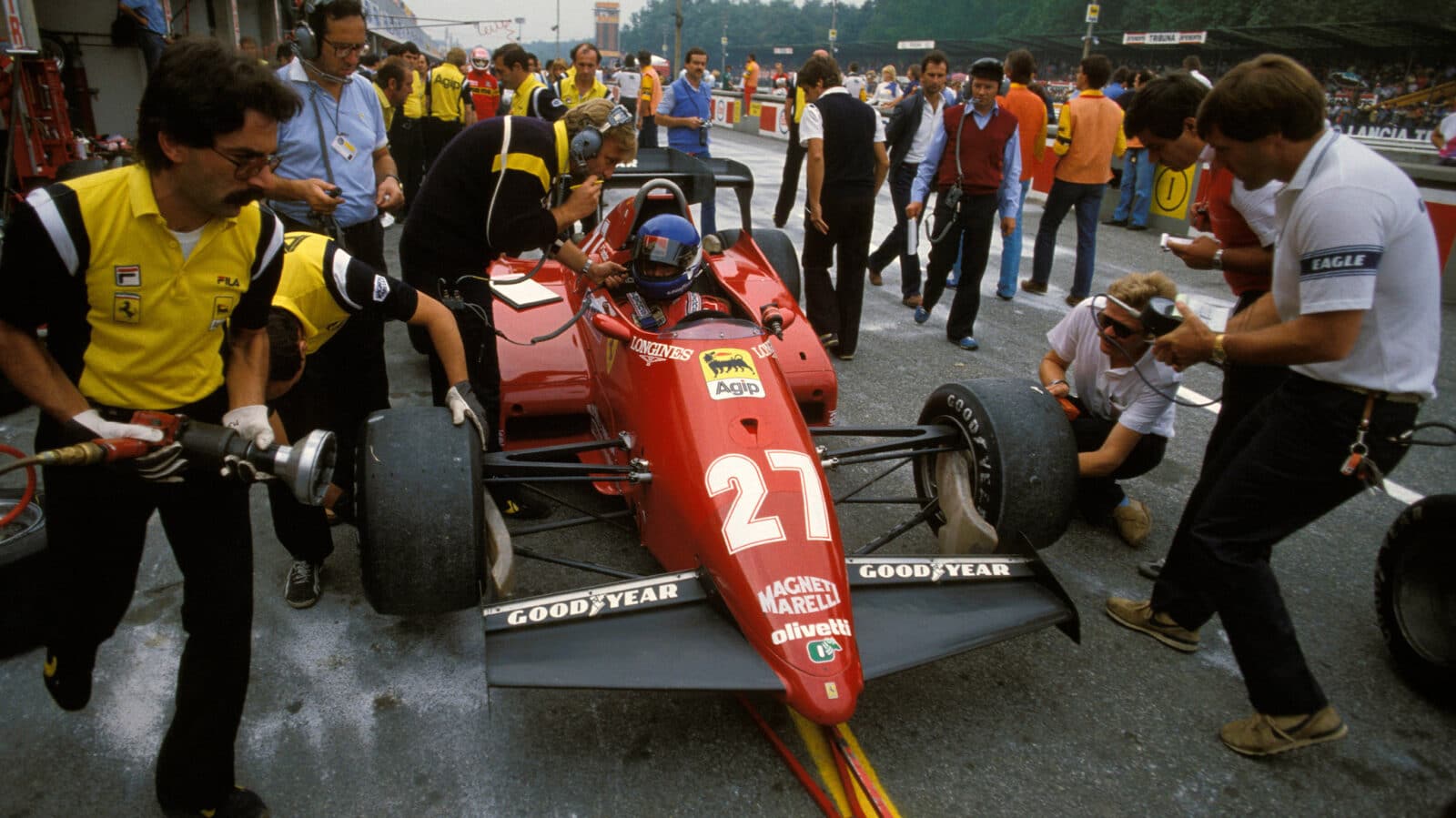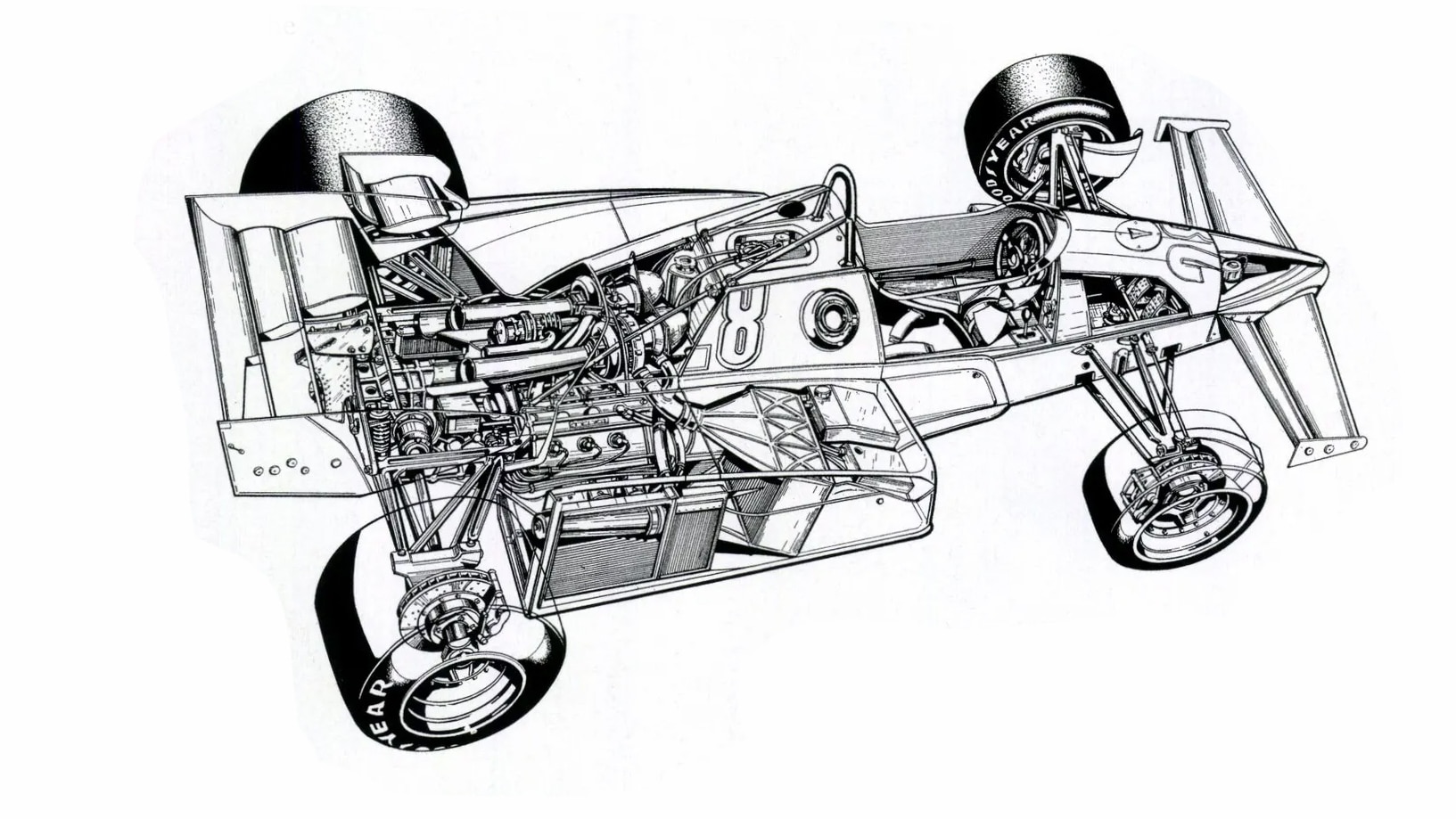Ferrari 126 C3: Power politics
Ferrari's early turbo cars were all about their engines. But Harvey Postlethwaite then designed a chassis able to rein in 1000bhp. Patrick Tambay talks to Adam Cooper

GP Photo
Ferrari’s F1 Finest
6th, 126 C3
<< Ferrari’s best-ever F1 cars
>> Ferrari 246 Dino: Front runner
Although it contested only seven Grands Prix in the second half of 1983, and scored just two wins, the 126C3 can claim to be one of the fastest Ferraris ever. Between them Patrick Tambay and René Arnoux took nine of the 14 front-row spots during that time, including four poles — and this was as the title battle between Brabham’s Nelson Piquet and Renault’s Alain Prost reached its climax. Ultimately, the split of points between the two Ferrari drivers ruined their own hopes, but with a little help from the C2B, the model that began the year, Ferrari claimed a back-to-back constructors’ title.
“We had had a change of rules between 1982 and 1983, concerning ground effects and flat bottoms,” explains Tambay. “The Ferrari was probably the best car of that period, and it was one of the best engines. We took a big step forward with C3.
“I had a very good technical working relationship with Mauro Forghieri. He was probably one of the best engineers I had the opportunity to work with, apart from Adrian Newey at Beatrice later on. He had a sixth sense for the track set-up, for the practice management and qualifying management. With very little input he would understand immediately what was happening, and react exactly to what was really necessary, would explain the reasons why, and put you into a positive and confident frame of mind.
“It was a difficult game compared with today in terms of all the data and electronics that help you. It was based on a very human understanding of the technical package. Harvey [Postlethwaite] was the designer and was doing the development. I don’t know exactly what input into the car one or the other had, but it was very much like Ross Brawn and Rory Byrne today.

“It was still the beginning of the honeycomb/carbonfibre chassis technology, and they were exploring things. They were working on stiffness, and maybe before the others they had put their finger on some interesting things. In 1982, for example, they did a strong stiffening programme in the middle of the season.
“The C3 was a very strong package. The engine performed well in qualifying set-up, and the tyres were well suited to banzai laps, although it was always difficult to get a balance between fronts and rears when using full boost. I really enjoyed driving this flat-bottom car with zero grip and lots of drift. When you look at the rear wings we had compared to the aerodynamics we have today, you tend to wonder if everything was as good as it should have been! We had engine problems as well, unfortunately. I was in contention for the drivers’ title at mid-season, until we had back-to-back unreliability problems.
“We ran into a little bit of a feud between the two of us, too. Arnoux was nowhere in the first part of the year, and woke up suddenly. We should have had team tactics then, but we didn’t. At Hockenheim and Austria I was on pole, we raced each other, and it blew up. So we mismanaged the second part of the year. From mid-season ’82 to mid-season ’83 I had enough points to be champion!”
“I feel a bit bashful to talk about how good this car might be in relationship to today’s car when you see what they are achieving now. But I’m not the only one to be embarrassed… probably everybody in the pitlane is!”
Ferrari 126 C3 statistics, 1983
• Grands prix entered 7
• Wins 2
• Additional podiums 4
• Pole positions 4
• Fastest laps 2
• Laps led 125
